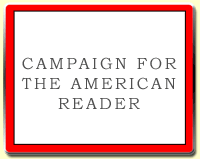 Kevin Jackson's childhood ambition was to be a vampire (“you’d get to live in a castle – how cool is that!”) but instead he became the last living polymath. His colossal expertise ranges from Seneca to Sugababes, with a special interest in the occult, Ruskin, take-away food, Dante’s Inferno and the moose. He is the author of numerous books on numerous subjects, including Fast: Feasting on the Streets of London (Portobello 2006), and reviews regularly for the Sunday Times. His new book is Bite: A Vampire Handbook.
Kevin Jackson's childhood ambition was to be a vampire (“you’d get to live in a castle – how cool is that!”) but instead he became the last living polymath. His colossal expertise ranges from Seneca to Sugababes, with a special interest in the occult, Ruskin, take-away food, Dante’s Inferno and the moose. He is the author of numerous books on numerous subjects, including Fast: Feasting on the Streets of London (Portobello 2006), and reviews regularly for the Sunday Times. His new book is Bite: A Vampire Handbook.For the Guardian, he named a top ten list of vampire novels.
One title on the list:

Let the Right One In by John Ajvide LindqvistRead about all ten novels on Jackson's list.
No one who has seen the justly acclaimed film version of Lindqvist's bleak but unexpectedly humane novel will need much encouragement to seek out the original, where much that is cryptic about the on-screen story becomes clarified. The heart of the narrative remains the same – a story of friendship and love between Oskar – a lonely, sad, bullied boy – and Eli, the girl (or is she?) vampire who comes to be his protector. But the book encompasses other tales too, and makes explicit the fact that Eli's older male companion is in fact a paedophile as well as a killer. Harsh, and uncomfortable, but compelling.
Also see Lisa Tuttle's top six vampire books.
--Marshal Zeringue







































